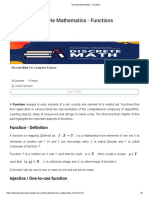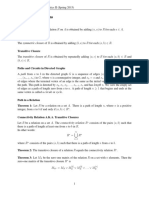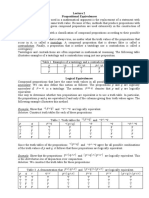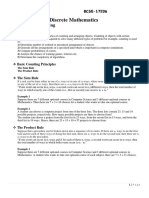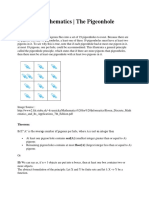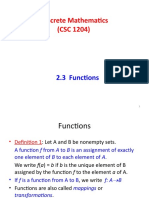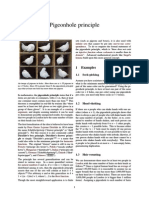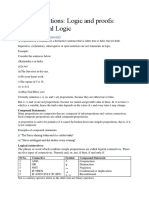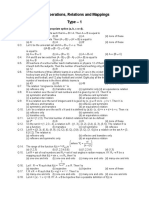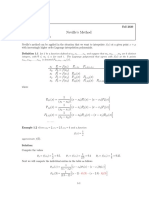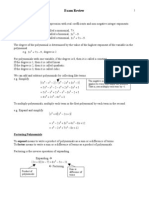0% found this document useful (0 votes)
51 views22 pagesDiscrete Math: Functions Guide
1) A function maps elements from one set (the domain) to elements in another set (the co-domain).
2) Functions can be one-to-one (injective), onto (surjective), or both (bijective).
3) Function composition involves applying one function to the output of another, written as f ○ g, where the output of g is the input to f. The inverse of a bijective function undoes the original function.
Uploaded by
Ramanamurthy BandaCopyright
© © All Rights Reserved
We take content rights seriously. If you suspect this is your content, claim it here.
Available Formats
Download as PPT, PDF, TXT or read online on Scribd
0% found this document useful (0 votes)
51 views22 pagesDiscrete Math: Functions Guide
1) A function maps elements from one set (the domain) to elements in another set (the co-domain).
2) Functions can be one-to-one (injective), onto (surjective), or both (bijective).
3) Function composition involves applying one function to the output of another, written as f ○ g, where the output of g is the input to f. The inverse of a bijective function undoes the original function.
Uploaded by
Ramanamurthy BandaCopyright
© © All Rights Reserved
We take content rights seriously. If you suspect this is your content, claim it here.
Available Formats
Download as PPT, PDF, TXT or read online on Scribd
/ 22

